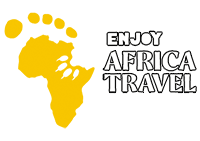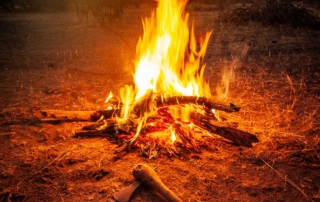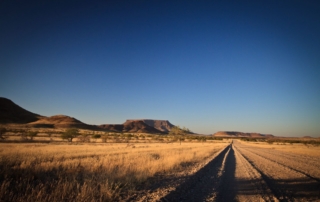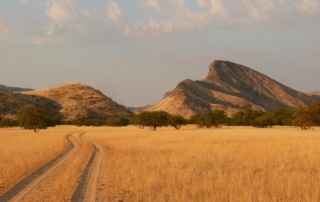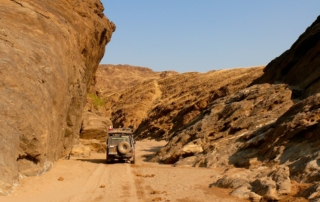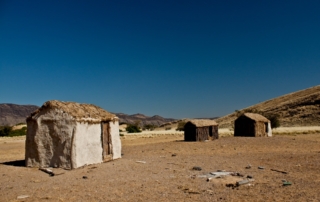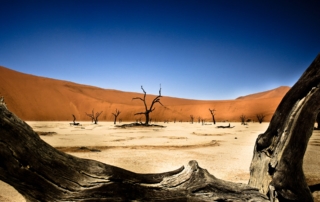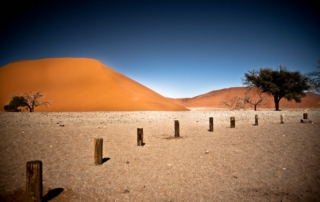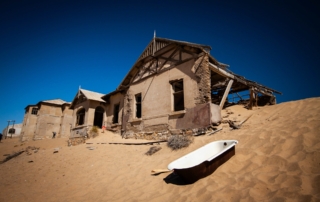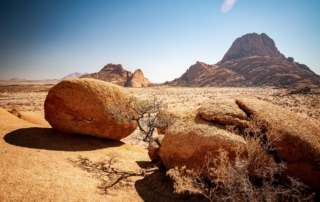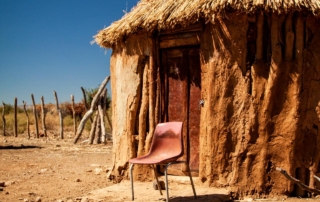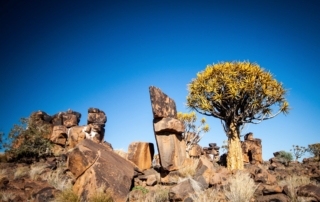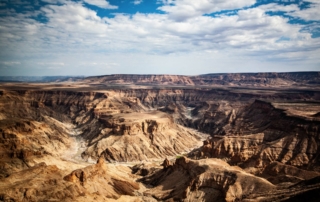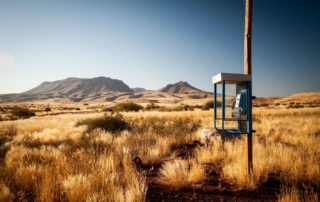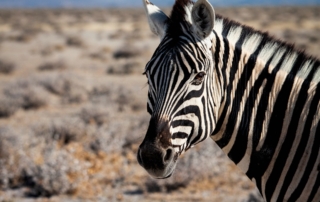You shouldn´t miss out on this one. An epic road trip that leads us from Johannesburg until Windhoek.
This road trip will take us from the bustling city of Johannesburg and end up in another jewel of Africa – Windhoek. We have a lot of highlights planned for you, mainly the famous Augrabies waterfalls, and then the South of Namibia, where there is a lot to discover.
Places include the Fish River Canyon, the Ai-Ais hot springs, the remote coastal town of Luderitz and an old, long-forgotten mining town.
On our way towards Windhoek we will make sure to stop at the world´s highest sand dunes at Sossusvlei. On the way you will see why we are in love with this continent. Imagine a crackling campfire with a bright milky way above your heads and the sounds of the bush surrounding us…
Information
Destination:
South Africa and Namibia
Date:
May 2023
Duration:
17 days
Participants:
min. 8 – max. 12
Expedition Type:
offroad, camping, exploring,
Base Price:
799 USD
*General info about expeditions and sign up you can find in our FAQs
The base price needs to be paid when signing up with us, either in full or as a deposit and after confirmation in full.
The base price includes
- guiding services for the whole duration of the expedition in your language
- planning and organizing a basic itinerary for the trip
- full knowledge and experience of your guides
- 5% of this goes to a selected wildife protection project in the country
The base price doesn´t include
(prices are in USD)
- expenses for transport – flights can be between 550 to 700 USD, if you book them well in advance you can get a good price.
- visa to Zimbabwe – 30 USD, Botswana is visa free
- expenses for rental car – the price per person for a full car is 580 USD (3 weeks)
- fuel costs – maximum 140 USD
- food costs – depending on how we do it (cooking, restaurants) – max 250 USD
- accommodation costs – camps – max 300 USD
- entry to national parks – 100 USD
- personal expenses – that depends on you, if you buy souvenirs, chips, sweets etc. – 200 USD
The above mentioned expenses are counted on a maximum basis, according to our experience with these kinds of trips and according to price lists for activities. Prices for fuel, food and accommodation depend on the exact itinerary, camping possibilities and driven kilometers.
We always check prices for different services and update them. The detailed expenses will be sent to each team member after signing up, together with our itinerary, a map and more info.
All services will be ordered on the spot, some expenses (like camping) will be paid directly by the traveller to the service provider. Since our first expedition with a group through Africa we have always used a simple system for group related expenses – a “group kitty” (expedition fund) – where every participant puts in a certain amount at the beginning of the trip and that money is used to pay for all group-related expenses (like fuel, fees, food etc.) Every expense is meticulously written down. Any other, not group-related expenses have to be paid for by the participant alone.
You can find more information about prices and expenses in Africa below, in our „IN AFRICA“ section and also in + RECOMMENDED ACTIVITIES where you can find out what else to do during the trip and get an idea, what costs what.
Have you decided on becoming an expedition member to explore the unknown?
Fill in your registration with us, that is your first step into the adventure. This is where the preparations start.
Information about the itinerary
The detailed info about each expedition containing info about the car, equipment, what to take with you, what not to bring and much more will be sent out to you in our “information for team members”.
Visa
For entering Namibia, most of you don´t need a visa. On the border you need to fill in a form and you will get a stamp in your passport, which is valid for 90 days. Some nationalities will have to apply for a visa before entering Namibia or South Africa.
Personal meeting
After signing up of all team members we would like to have a personal meeting with the whole group, where we can get to know each other a bit and where we talk about the itinerary (you can have your say in this also!) If a personal meeting is not possible, we can organize an online meeting (skype, zoom) and we can talk about any questions you may have.
Consulting and advice
While you are preparing for your trip, we are at your disposition with hints, advice and recommendations.
You will receive an information pack after your sign up.
What and how to pack
Travel light and comfortable. Best is to have collapsible bags, not a suitcase. It should be resilient to dust and general traveling. What proved ideal is a normal backpack and a small day pack. Weight wise it should not be more than 20kg plus tent. You won´t need too many clothes, just the basics, light but also a sweater.
More info will be sent out to you after your sign up.
will have to be valid for at least 6 months after the trip and not contain an Israelian visa.
Vaccination
it is not in our competence to recommend you vaccinations or to make a plan for you, you will need to talk to professionals about it. Your GP is your first point, otherwise some health or travel medical centres will be able to help you. What we can recommend is that we think it´s a good idea to be vaccinated against some of the major diseases. It may happen that you will be asked to prove a yellow fever vaccination upon arrival. What we can also do is telling you what WE are vaccinated against and what is written in our international vaccination pass:
- Hepathitis A, B
- Meningitis
- Typhoid
- Tetanus
- Yellow fever
- Rabies
Travel insurance
travel insurance is something very important and a must-have. If you want to join one of our expeditions, you MUST have a travel insurance. This protects yourself and us.
In general – some countries, that you need visas for will ask about a travel insurance as well, for example Namibia for Czech citizens.
Base itinerary and recommended activities

Main points of our itinerary we shouldn´t miss on this trip
- Augrabies Falls – A beautiful waterfall in a Kalahari setting. We can do some walking treks around there, camp under the stars and watch rock hyraxes play.
- Fish River Canyon – The second largest canyon in the world and what a sight to behold! Standing at the edge of this huge gash in the planet´s surface, it is hard to grasp its size
- Ai-Ais Hot Springs – Those hot springs make for a great relaxing day in a hot pool, lazing around and relaxing. It´s not very far from the Fish River Canyon.
- Mesosaurus Camp – Wanna see dinosaurs? Or at least what´s left of them? And at the same time enter a world and scenery that looks like from a different planet? Then we will take you to a magic place full of Quiver trees, giant rocks and old fossils. An absolutely wonderful place.
- Luderitz – It seems like at world´s end when coming to Luderitz. A harbour town built by the Germans at the peak of diamond trade. Now, it´s a sleepy little town right at the Atlantic Ocean. From here, we can visit Kolmanskop, an old derelict mining town, that is very photogenic.
- Sossusvlei – The Namib Naukluft Park is huge, Sossusvlei being only a little part of it. But it´s actually one of the oldest deserts on the planet with up to 300m high sand dunes in an orange colour. To wander around there among the stark, dead trees is a feeling out of this world!
Our itinerary is filled with a lot of known and unknown places. Into each expedition we include places, which we discovered by ourselves and all places have been visited by us many times. Here, you will be an explorer and adventurer – so you have something to look forward to
Enrich your trip with some unforgettable outdoor or culture experience.
There will be options en route, you could do a balloon flight over the dunes, visit the derelict diamond town of Kolmanskop or we could even plan a trip to Sandwich Harbour. Prices for those will be updated as we always search for the best price/value on these packages.
In Africa
The start of the expedition is in our city of arrival, in this case Johannesburg. It depends on our team and how we all will get to the meeting point. Just find yourself the right carrier, like Qatar, Turkish, Ethiopians or others. The flight price depends on your departure airport, it is wise to play around with different airports to fly from.
It is not necessary that the whole group is flying together, if someone wants, he/she can fly to Africa individually and extend their stay, either before or after our expedition. Just be reminded that then you are on your own, we just require you to be on our meeting point in time. Mostly, our meeting point will be at the international airport.
On our expeditions, we always choose a 4×4 vehicle, equipped for offroad and camping. Into the desert or bush one shouldn´t go with a different car, often we may be far away from civilization and need to rely on the car. An offroad car in this case is required. There are many different types, we often use a VW Transporter Syncro, which from the financial side and a travel in style we often use. We talk about driving when meeting and preparing for the expedition. You would need an international driver´s license.
What adds to the rental price is the fuel, expenses for fuel will be cheaper than in Europe, mostly a litre of petrol in Botswana, for example, costs around 80 cents, but in neighbouring Zimbabwe it is 1,40 USD already. (it depends on the seller, some petrol stations are closed, sometimes we may have to use the black market…)
The maximum costs for the rent of an offroad vehicle with a full car will roughly come to 548 USD per person (example for a full VW Syncro with 8 pax). Rental price includes all equipment for camping, cooking and offroad driving. Our itinerary will roughly be around 4-4.500km long, so the maximum fuel price per person should be around 120-140 USD.
We will mostly sleep in tents, which are part of the rental car. You will only need to bring a sleeping bag and a matress. We will mostly have classical ground tents, when we stay anywhere for a few days we don´t need to pack or unpack the tent every day.
We will camp in official camp grounds, sometimes at a lodge and when off the beaten track we will use community camps or villages.
Prices for camping are anything between 5 to 15 USD, depending on the place and the season. In our budget, we count 15 USD per person and per day, this way we have a reserve if we decide to camp in a bit more luxury somewhere else.
The expenses for our camping should not be more than 300 USD
Mostly we will either cook ourselves or visit local restaurants and snack shops, if possible. On our rough itinerary, we will often be in the bush or little settlements where there are no restaurants. There, we will depend on ourselves and cook together from supplies we bought. If possible, we will cook on an open fire and use local products, antelope steaks etc. Namibia and South Africa have very nice beef so we will use that certainly. Cattle here is not locked up in sheds but spends its time roaming the Botswanian landscape.
When possible, we will always try to get you acquainted with local food culture and specialties for each country.
Vegetarians will be able to go meat free, we can always make a plan together. We have had vegetarians with us in the past and it worked just fine.
Expenses for a full stomach will come to a maximum of 250 USD
Weather
The expedition takes place in the African winter time (our summer), but don´t be scared, winter in Namibia is not like our winter. Temperatures will be around 20-25°C during the day and nights will be cooler, some areas warmer, some colder. In the Kalahari desert, nights can be freezing, in Chobe, nights will be much warmer. Take light clothes and don´t forget a sweater. Best is to layer up. We don´t expect rain as it´s the dry season.
Internet and communication
It may happen that your European sim card doesn´t work in Namibia. Close to borders you may catch a signal from operators across the border. The best way is to buy a local sim card. The prices in Africa are not too expensive, you can get 1GB for about 15 USD, but we have to stress that signal is very limited, Namibia is quite a big country with only few people in it. We had to climb trees before to try and catch a signal.
Safety
Namibia is a very safe country. Thanks to its low population and big surface there are lots of places where you won´t see humans for a long time. But: Even if Namibia is safe when it comes to crimes, dangers arise from the lack of experience of traveling by car and how to behave in remote and wildlife areas. You have to stick to the basic rules in the wilderness or in unfenced camps, it is very important. We will brief you thoroughly before the trip. If you stick to the rules, you will have a great experience!
